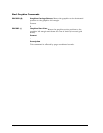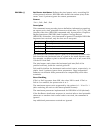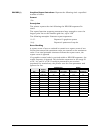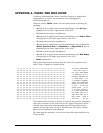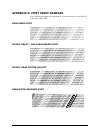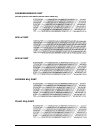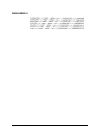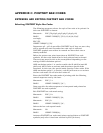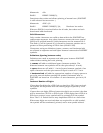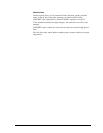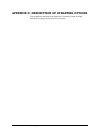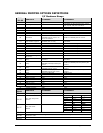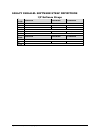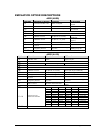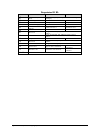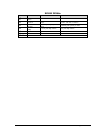
Appendix C. Postnet Bar Codes GEK-00029B
266
Mnemonic: <SI>
BASIC: LPRINT CHR$(15);
Deactivates bar codes and allows printing of normal text. (POSTNET
is still selected but not active. )
Mnemonic: <ESC> [0t
BASIC: LPRINT CHR$(27);"[0t; Deselects bar codes.
When an ESC[0t is received before the Al code, bar codes are both
deactivated and deselected.
Valid Characters
Only certain characters are valid as data within the POSTNET bar
code escape sequence. Any other character causes the error symbol
(XOX) to be printed instead. Valid characters are the numerals 0-9.
The dash (-) will be ignored if it is found in character position six or
greater to allow processing of ZIP+4 data (22980-1999).
Characters acting as delimiters (space, comma, and horizontal tab)
are allowed to separate and add space between consecutive POSTNET
symbols.
Delimiters (Spacing between codes)
Delimiters are used to separate and add space between POSTNET
codes without exiting bar code printing.
A
comma
will add no additional space between symbols. The
distance between two symbols will be the quiet zone (0. 4 inch).
A
space
character will add 0. 1 inch of space between symbols. One
space character and the quiet zone will equal a total of 0. 5 inch.
A
horizontal tab
will add the appropriate number of empty spaces to
go to the next tab before starting the symbol. Horizontal tabs in
POSTNET are based on 10 columns. or text characters, per inch (10
CPI).
Incorrect Number of Digits
If less than five digits for a ZIP Code or nine for a ZIP+4 are received,
the symbol will be printed with the missing digits replaced by error
symbols.
If more than six digits (ZIP and correction digit) are received, the data
will be treated as a Z1P+4 or ZIP+6 code. If less digits than a ZIP+4 or
ZIP+6 are received, error symbols will be printed to fill the symbol.
Note: The U. S. Postal Service may implement ZIP+6 at a later date.
When more digits are received than are required for a valid symbol,
the symbol will be terminated, printed, and a new symbol started.



